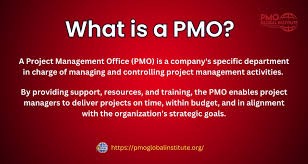
The concept of a Project Management Office (PMO) has become a central fixture in today's business landscape, driving project success and organizational efficiency. This article delves into the essence of PMO, exploring its functions, benefits, and varied structures. We'll also address common questions surrounding the topic, providing a thorough understanding for professionals and organizations considering implementing a PMO.
Introduction to PMO
The Project Management Office (PMO) is an organizational structure designed to standardize project-related governance processes and facilitate the sharing of resources, methodologies, tools, and techniques. The responsibilities of a PMO can range from providing project management support functions to actually being responsible for the direct management of one or more projects.
Functions of a PMO
The PMO serves multiple functions within an organization, including but not limited to:
Project Support: Offers tools, templates, and best practices.
Governance: Ensures project alignment with organizational goals.
Portfolio Management: Oversees project selection and prioritization.
Resource Management: Allocates personnel and budget resources efficiently.
Benefits Realization: Tracks the realization of business benefits from projects.
Types of PMOs
PMOs can vary widely in structure and function, with the three most common types being:
Supportive PMO: Provides consultation and resources to project managers.
Controlling PMO: Has moderate control, ensuring project compliance through various means.
Directive PMO: Takes full control of the projects, directly managing them.
Benefits of Implementing a PMO
Organizations that implement a PMO can see numerous benefits, such as:
Improved Project Success Rates: Through standardized processes and governance.
Increased Efficiency: By streamlining project delivery methods.
Enhanced Decision Making: With centralized data and reporting.
Better Resource Management: Ensuring optimal use of resources across projects.
Challenges in PMO Implementation
Despite the benefits, organizations may face challenges when implementing a PMO, including:
Resistance to Change: Individuals may be hesitant to adopt new processes.
Alignment with Organizational Culture: The PMO must be compatible with the existing culture.
Demonstrating Value: Justifying the PMO's existence with tangible metrics.
Key Components of an Effective PMO
An effective PMO includes:
Skilled Personnel: Competent staff who can manage projects efficiently.
Standardized Methodologies: For consistency in project management.
Technology: Tools for tracking and managing projects.
Executive Support: Leadership backing is crucial for PMO success.
PMO Best Practices
To ensure success, PMOs should adhere to best practices such as:
Aligning with Strategic Goals: The PMO should reflect the organization's objectives.
Flexibility: Adapting to the organization's changing needs.
Continuous Improvement: Regularly refining processes and methodologies.
FAQs about PMOs
Q: How does a PMO differ from traditional project management? A: A PMO provides a centralized framework for managing projects across the organization, unlike traditional project management which focuses on individual projects.
Q: Can small organizations benefit from a PMO? A: Yes, even small organizations can benefit from the structure and standardization a PMO offers, though the scale and complexity of the PMO may vary.
Q: What is the key to a successful PMO? A: Alignment with organizational goals, executive support, and continuous improvement are key factors in the success of a PMO.
0 件のコメント
この投稿にコメントしよう!
この投稿にはまだコメントがありません。
ぜひあなたの声を聞かせてください。
